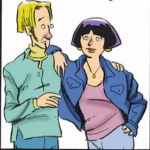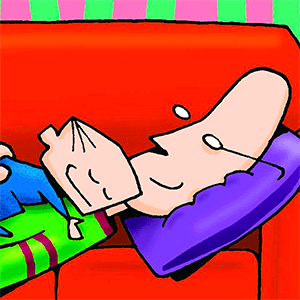Key witness Jennifer McCabe takes the stand in Karen Read murder trial
Published in News & Features
DEDHAM, Mass. — Key witness Jennifer McCabe, whose presence has loomed over the Karen Read retrial, was finally called to the stand Tuesday and gave detailed testimony on John O’Keefe’s final night.
“At 4:53, my phone rings … I heard a voice and a lot of screaming,” McCabe testified in the moment she says that Jan. 29, 2022, changed her life forever.
The screaming, she said, was Karen Read, “hysterical” and “hard to follow and understand.” Read said something about how she might have left John O’Keefe at the bar they were all at earlier, McCabe testified. Later, she said, Read told her that she might have hit O’Keefe with her car and talked about a broken taillight.
“She’s screaming ‘Jen! Jen!’” McCabe testified about Read driving over to her house at around 5:30 a.m. “She said we have to go to 34 Fairview. She was saying ‘Could I have hit him? Could I have hit him?’ She was just on repeat.”
Read faces charges including second-degree murder in the death of her boyfriend, Boston Police Officer John O’Keefe. Prosecutors say that she rammed her Lexus SUV into O’Keefe and left him to freeze and die on a Canton front yard during a Nor’Easter.
McCabe was one of the most significant witnesses during the first trial last year and her importance has already been well established since the first day of this new trial.
Kerry Roberts, who was called on the first day of trial, testified that she, McCabe and Read all found O’Keefe dead or dying on the front lawn of 34 Fairview Road in Canton a little after 6 a.m. on Jan. 29, 2022.
Defense attorney Alan Jackson hammered her on the details of that encounter, during which Roberts admitted that her grand jury testimony that Read asked McCabe to “google hypothermia” at around 6:20 a.m. wasn’t true — she hadn’t actually heard it, she said, but was told by McCabe that’s what happened.
Just ahead of her was the continuing testimony of Ian Whiffin, the prosecution’s digital forensics expert, who testified at length to that Google search, as well as records from O’Keefe’s phone just ahead of his alleged murder and in the hours following. Those records included calls from both McCabe and Read.
‘Hos long … ’
Whiffin’s testimony regarding McCabe was limited primarily to that search. He maintained that the 2:27 a.m. timestamp was an artifact of the Safari tab’s last access time before the search was conducted on it, not the time of the search.
McCabe testified on Tuesday that she was searching on her phone for her daughter’s hockey scores before going to bed. Whiffin testified that he believes this to be true based on his analysis. He said that when she made the search at around 6:20 a.m. as Roberts testified, she just opened her last Safari tab and searched from there.
He used his own forensic tool to perform searches live in the courtroom to show that new records are not created in the on-phone history database when the same tab is used again, or even if Safari is minimized and then brought back into focus.
In cross examination, Whiffin admitted that this was just his “opinion.” The expert from Cellebrite also testified that a rival company’s software, called Axiom, had the 2:27 a.m. timestamp intact and that the software is highly regarded and accurate.
The afterparty
McCabe testified that she and her husband met up with others, including her sister and Brian Albert — who owned 34 Fairview Road at the time — at Waterfall Bar and Grill.
“I loved John and I liked Karen” she said, saying she was happy to see them. “I probably hugged both of them when I saw them.”
Video surveillance footage from the bar shows McCabe clapping at their arrival at around 10:54 p.m. on Jan. 28. The party left the bar at around 12:10 a.m.
The plan was to go back to 34 Fairview Road to celebrate Brian Albert Jr.’s birthday there and continue drinking, McCabe testified. McCabe said she drove herself and her husband Matt McCabe there through a growing snow.
“Everyone was in a great mood,” she said, adding that she expected O’Keefe and Read to come. She was texting O’Keefe about how to get to the house. Eventually, she said, she saw Read’s car parked along the road and she texted O’Keefe to have them come up.
But she said neither O’Keefe nor Read ever entered, and eventually she realized Read’s car was gone. She said she and her husband, along with two of her nephew’s friends who needed a ride home, at around 1:40 a.m. and that she didn’t pay attention to the area of the flag pole where O’Keefe’s body would eventually be found and should have already been.
O’Keefe
The bulk of Whiffin’s testimony was on the location data of O’Keefe’s phone, combined with battery temperature.
Whiffin testified Monday that it’s his opinion that from around 12:30 a.m. to a little after 6 a.m., when O’Keefe was discovered, O’Keefe’s phone — and presumably the man himself — “never moved far from the flagpole.”
On Tuesday, Alessi challenged the veracity of that analysis. He showed a diagram that showed a number of circles — which marks the accuracy range of a cell phone’s location data — the largest of which covered a wide portion of the home on the property. The meaning is that O’Keefe could have made it inside and been killed there and then dragged outside.
Alessi also established that there were 36 steps taken — covering 25 meters or more than 80 feet — recorded at around 12:32 a.m. Those steps, Whiffin admitted during cross-examination, would be enough to cover the distance from the home’s front door to the flagpole area.
Whiffin testified that O’Keefe’s phone battery dropped in temperature during that time, suggesting he was in fact outside. Alessi challenged that supposition using Whiffin’s own tests of putting an iPhone in a freezer to show significant temperature degradation — a drop of 50 degrees in 15 minutes. O’Keefe’s battery temperature data, also exposed to freezing temperatures, in contrast dropped only 22 degrees in the course of an hour.
“Was there any interest at all in what this could mean about where O’Keefe was?” Alessi asked. “That O’Keefe could be in a covered building instead of outside in a Nor’Easter on Jan. 29, 2022?”
ARCCA witnesses
The defense won its argument that two of their witnesses, from a forensic engineering firm called ARCCA, should be able to testify. The arguments took more than two hours on Monday and continued in the last 30 minutes of court Tuesday before Cannone ruled.
Special Prosecutor Hank Brennan had argued that the experts and the defense both zipped past deadlines and ignored court orders for transparency and pretty much did evidence by “ambush,” not allowing the prosecution enough time for its own witnesses to examine and respond to findings.
Cannone agreed with the argument, but said that a defendant’s right to a fair trial is paramount,” and that includes using preferred experts.
_____
©2025 MediaNews Group, Inc. Visit at bostonherald.com. Distributed by Tribune Content Agency, LLC.







Comments